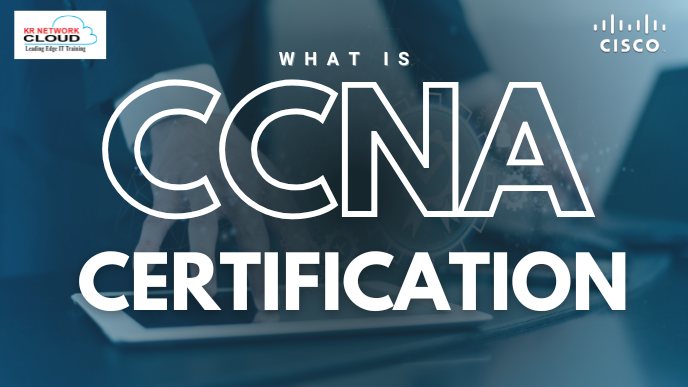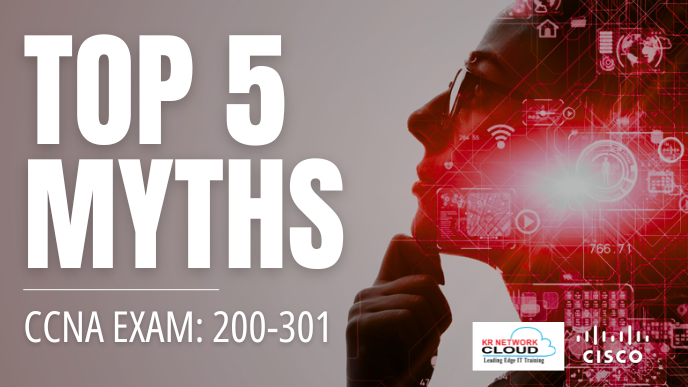Ultimate Guide to RHCE Certification: Mastering Red Hat Enterprise Linux Skills

- KR NETWORK CLOUD
- August 11, 2025
Introduction to RHCE Certification
In the world of IT infrastructure, Linux expertise is a game-changer, and the RHCE certification stands out as a benchmark for professionals aiming to prove their skills in managing Red Hat Enterprise Linux (RHEL) environments. If you’re an aspiring system administrator or an IT pro looking to advance your career, earning your Red Hat Certified Engineer (RHCE) credential can open doors to high-demand roles in enterprise settings. This guide dives deep into what RHCE entails, why it’s worth pursuing, and how to prepare effectively for the RHCE exam.
RHCE certification isn’t just a badge—it’s a validation of your ability to handle complex tasks like configuring networking, managing storage, and securing systems in real-world scenarios. With the growing adoption of open-source technologies, companies are actively seeking RHCE-certified engineers to maintain robust, scalable infrastructures.
What is RHCE and Its Evolution?
The Red Hat Certified Engineer (RHCE) is an advanced-level certification offered by Red Hat, focusing on performance-based skills rather than theoretical knowledge. Unlike multiple-choice exams, the RHCE exam requires candidates to perform hands-on tasks in a live RHEL environment, simulating real administrative challenges.
Historically, RHCE has evolved with Red Hat’s ecosystem. The current RHCE certification is aligned with RHEL 9, emphasizing automation, containerization, and security enhancements. To achieve RHCE, you must first hold the Red Hat Certified System Administrator (RHCSA) certification, as it’s a prerequisite. This progression ensures that RHCE holders are not only foundational experts but also proficient in advanced topics like Ansible automation and SELinux policy management.
Key areas covered in RHCE include:
- System Configuration and Management: Tasks such as tuning kernel parameters and managing logical volumes with LVM.
- Networking Services: Configuring firewalls with firewalld, setting up VLANs, and implementing teaming for network redundancy.
- Storage Administration: Handling iSCSI targets, NFS shares, and advanced file systems like XFS.
- Security Enhancements: Enforcing access controls with ACLs, configuring sudoers, and integrating with LDAP for authentication.
By mastering these, RHCE certification equips you to troubleshoot and optimize RHEL systems efficiently.
Benefits of Earning Your RHCE Certification
Pursuing RHCE certification offers tangible advantages in today’s competitive job market. According to industry reports, RHCE-certified professionals often command higher salaries—averaging 20-30% more than non-certified counterparts—due to their proven expertise in enterprise Linux administration.
Beyond financial perks, RHCE enhances your credibility. Employers value the hands-on validation, knowing that RHCE holders can hit the ground running in roles like DevOps engineer, cloud administrator, or infrastructure specialist. It also aligns well with emerging technologies; for instance, RHCE skills are crucial for managing Kubernetes clusters on OpenShift, Red Hat’s container platform.
Moreover, maintaining your RHCE certification through recertification every three years keeps your knowledge current, fostering continuous learning in areas like automation scripting with Bash and Python.
Prerequisites for the RHCE Exam
Before diving into RHCE preparation, ensure you meet the basics. As mentioned, RHCSA is mandatory, which covers entry-level skills like user management, package installation with yum/dnf, and basic troubleshooting.
Red Hat recommends practical experience with RHEL, ideally in a professional setting. If you’re new, start with self-paced labs or virtual machines to practice commands like systemctl for service management or lvcreate for volume groups.
No formal education is required, but familiarity with Linux fundamentals—such as file permissions (chmod/chown) and process monitoring (ps/top)—is essential for success in the RHCE exam.
RHCE Exam Details: What to Expect
The RHCE exam (EX294 for RHEL 9) is a 4-hour, performance-based test conducted in a proctored lab environment. You’ll face 15-20 tasks, each requiring you to configure, troubleshoot, or automate aspects of an RHEL system. There’s no partial credit—tasks must be fully functional to pass.
Scoring is pass/fail, with a typical passing threshold around 70%. The exam fee is approximately $600, and it’s available at Red Hat testing centers or remotely via online proctoring.
Pro tip: Focus on time management during the RHCE exam. Practice under timed conditions to simulate the pressure, ensuring you can swiftly execute commands like ansible-playbook for automation or semanage for SELinux contexts.
How to Prepare for RHCE Certification
Effective RHCE preparation combines structured learning with hands-on practice. Here’s a step-by-step approach:
- Enroll in Official Training: Red Hat’s RH294 course provides in-depth coverage of exam objectives, including labs on container management with Podman and network security.
- Leverage Free Resources: Use Red Hat’s documentation portal for guides on topics like firewall-cmd configurations. Online platforms offer free RHCE practice exams to test your readiness.
- Build a Home Lab: Set up a virtual environment using tools like VirtualBox or KVM. Experiment with real scenarios, such as creating a bonded interface with nmcli or automating deployments via Ansible roles.
- Study Key Technical Concepts: Dive into advanced topics technically. For example, understand how to configure a static route with ip route add or manage quotas with setquota. Pay attention to troubleshooting: If a service fails, check logs with journalctl and debug accordingly.
- Join Communities: Engage in forums like Reddit’s r/redhat or LinkedIn groups for RHCE tips. Sharing experiences can reveal common pitfalls, like overlooking SELinux denials in audit logs.
Aim for 3-6 months of dedicated study if you have RHCSA under your belt. Consistency is key—practice daily to internalize commands and workflows.
Common Challenges and Tips for Success
Many candidates struggle with the RHCE exam’s hands-on nature, especially under time constraints. A frequent hurdle is automation; ensure you’re comfortable writing Ansible playbooks for tasks like user provisioning across multiple hosts.
To overcome this, memorize shortcuts: Use ansible-doc for module references during prep. Also, prioritize security—tasks involving firewalld zones or sshd_config tweaks are staples.
Remember, RHCE certification is about practical mastery, so simulate failures in your lab, like inducing a disk error and recovering with fsck.
Conclusion: Why RHCE Certification is Your Next Step
In summary, RHCE certification is a powerhouse credential for anyone serious about Linux administration. It not only boosts your technical prowess but also positions you as a go-to expert in Red Hat ecosystems. Whether you’re aiming for cloud roles or enterprise IT, investing in RHCE preparation pays off with enhanced skills and opportunities.
Ready to embark on your RHCE journey? Start with RHCSA if needed, then tackle the advanced challenges. With dedication, you’ll join the ranks of elite Red Hat Certified Engineers shaping the future of open-source infrastructure. If you have questions about specific RHCE exam topics, drop them in the comments!
Watch out the session: Click here
FAQs
1. What is RHCE certification?
The Red Hat Certified Engineer (RHCE) certification is an advanced-level credential that validates your ability to manage and troubleshoot Red Hat Enterprise Linux (RHEL) systems. It focuses on hands-on skills in areas like automation, networking, storage, and security, building on the foundational Red Hat Certified System Administrator (RHCSA) certification.
2. Who should pursue RHCE certification?
RHCE certification is ideal for system administrators, DevOps engineers, or IT professionals with RHCSA certification and practical experience in Linux environments. It suits those aiming to advance into roles managing enterprise RHEL systems, including cloud and containerized environments.
3. What are the prerequisites for RHCE certification?
You must hold a valid RHCSA certification to pursue RHCE. Red Hat also recommends hands-on experience with RHEL, particularly in tasks like configuring networking services (e.g., firewalld) and automation with Ansible.
4. What is the RHCE exam format?
The RHCE exam (EX294 for RHEL 9) is a 4-hour, performance-based test where candidates complete 15-20 practical tasks in a live RHEL environment. Tasks cover advanced system administration, such as setting up iSCSI targets or writing Ansible playbooks. It’s pass/fail, typically requiring a 70% score.
5. How much does the RHCE certification exam cost?
The RHCE exam fee is approximately $600, though prices may vary by region. Check Red Hat’s official website for exact pricing and discounts on bundled training.
6. How long does it take to prepare for RHCE certification?
Preparation time varies based on experience. With RHCSA certification and some RHEL experience, 3-6 months of dedicated study (2-3 hours daily) is typical. Focus on hands-on practice with tools like VirtualBox and Ansible.
7. What topics are covered in the RHCE certification exam?
The RHCE exam tests advanced RHEL skills, including:
- Automation: Writing Ansible playbooks for tasks like user management.
- Networking: Configuring VLANs, teaming, and firewalls with firewalld.
- Storage: Managing LVM, NFS shares, and iSCSI.
- Security: Implementing SELinux policies, ACLs, and LDAP authentication.
- Troubleshooting: Diagnosing issues using journalctl or semanage.
8. How can I prepare effectively for RHCE certification?
To prepare for RHCE certification:
- Enroll in Red Hat’s RH294 course for structured learning.
- Practice in a home lab using VirtualBox or KVM to simulate tasks like nmcli for network bonding.
- Study Red Hat’s official documentation and use ansible-doc for automation references.
- Take practice exams to build speed and confidence.
- Join communities like r/redhat on Reddit for tips and peer support.
9. What are the benefits of RHCE certification?
RHCE certification enhances your credibility, boosts earning potential (often 20-30% higher salaries), and prepares you for roles like DevOps engineer or cloud administrator. It’s also valued for managing Red Hat OpenShift and Kubernetes environments.
10. How long is RHCE certification valid?
RHCE certification is valid for three years. To maintain it, you can retake the exam or pursue higher certifications like Red Hat Certified Architect (RHCA).






